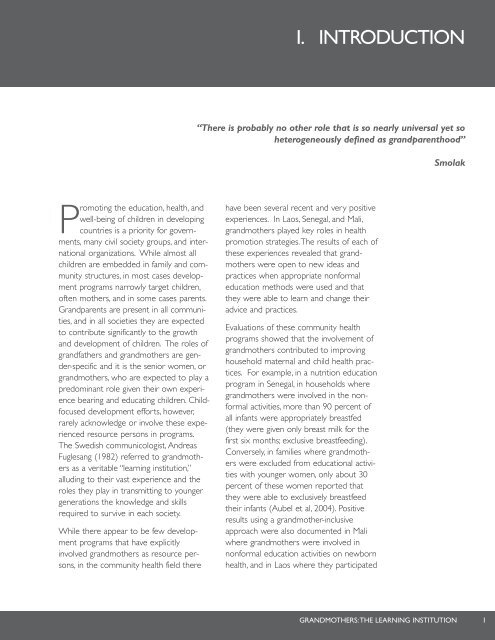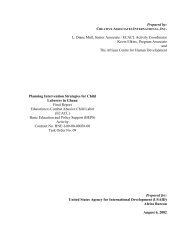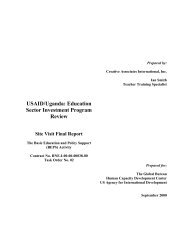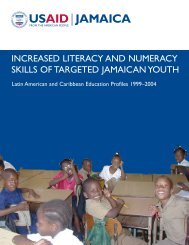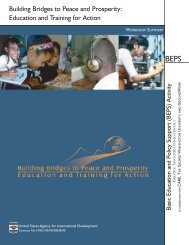Grandmothers: A Learning Institution - Basic Education and Policy ...
Grandmothers: A Learning Institution - Basic Education and Policy ...
Grandmothers: A Learning Institution - Basic Education and Policy ...
- No tags were found...
Create successful ePaper yourself
Turn your PDF publications into a flip-book with our unique Google optimized e-Paper software.
I. INTRODUCTION“There is probably no other role that is so nearly universal yet soheterogeneously defined as gr<strong>and</strong>parenthood”SmolakPromoting the education, health, <strong>and</strong>well-being of children in developingcountries is a priority for governments, many civil society groups, <strong>and</strong> internationalorganizations. While almost allchildren are embedded in family <strong>and</strong> communitystructures, in most cases developmentprograms narrowly target children,often mothers, <strong>and</strong> in some cases parents.Gr<strong>and</strong>parents are present in all communities,<strong>and</strong> in all societies they are expectedto contribute significantly to the growth<strong>and</strong> development of children. The roles ofgr<strong>and</strong>fathers <strong>and</strong> gr<strong>and</strong>mothers are gender-specific<strong>and</strong> it is the senior women, orgr<strong>and</strong>mothers, who are expected to play apredominant role given their own experiencebearing <strong>and</strong> educating children. Childfocuseddevelopment efforts, however,rarely acknowledge or involve these experiencedresource persons in programs.The Swedish communicologist, AndreasFuglesang (1982) referred to gr<strong>and</strong>mothersas a veritable “learning institution,”alluding to their vast experience <strong>and</strong> theroles they play in transmitting to youngergenerations the knowledge <strong>and</strong> skillsrequired to survive in each society.While there appear to be few developmentprograms that have explicitlyinvolved gr<strong>and</strong>mothers as resource persons,in the community health field therehave been several recent <strong>and</strong> very positiveexperiences. In Laos, Senegal, <strong>and</strong> Mali,gr<strong>and</strong>mothers played key roles in healthpromotion strategies.The results of each ofthese experiences revealed that gr<strong>and</strong>motherswere open to new ideas <strong>and</strong>practices when appropriate nonformaleducation methods were used <strong>and</strong> thatthey were able to learn <strong>and</strong> change theiradvice <strong>and</strong> practices.Evaluations of these community healthprograms showed that the involvement ofgr<strong>and</strong>mothers contributed to improvinghousehold maternal <strong>and</strong> child health practices.For example, in a nutrition educationprogram in Senegal, in households wheregr<strong>and</strong>mothers were involved in the nonformalactivities, more than 90 percent ofall infants were appropriately breastfed(they were given only breast milk for thefirst six months; exclusive breastfeeding).Conversely, in families where gr<strong>and</strong>motherswere excluded from educational activitieswith younger women, only about 30percent of these women reported thatthey were able to exclusively breastfeedtheir infants (Aubel et al, 2004). Positiveresults using a gr<strong>and</strong>mother-inclusiveapproach were also documented in Maliwhere gr<strong>and</strong>mothers were involved innonformal education activities on newbornhealth, <strong>and</strong> in Laos where they participatedGRANDMOTHERS:THE LEARNING INSTITUTION1


